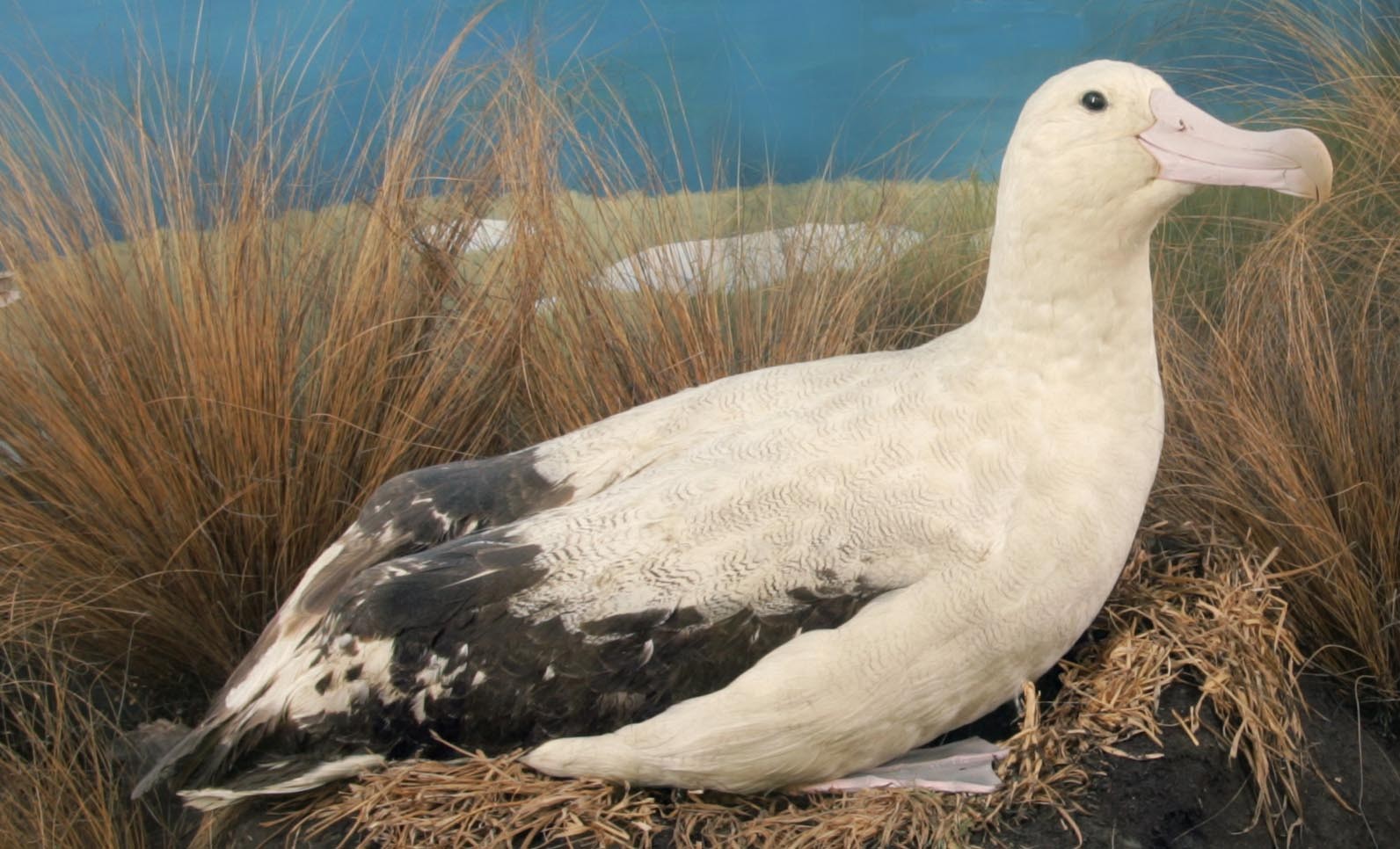Antipodean Albatross
A species of Great albatrosses Scientific name : Diomedea antipodensis Genus : Great albatrosses
Antipodean Albatross, A species of Great albatrosses
Botanical name: Diomedea antipodensis
Genus: Great albatrosses
Content
Description General Info
Description
The Antipodean is large, at 110 cm (43 in) in length. Its breeding plumage is brown and white and its juveniles are similar in appearance to the wandering albatross. Breeding females have brown upper parts, and have white vermiculations on their back. Its face, throat, lower breast, and belly are white, and its undertail coverts are brown. Its underwings are also white, but with a dark tip. Breeding males are whiter than females, but not as white as the wandering albatross, and both sexes have a pink bill. The females of the nominate race have a dark brown breast band and the males have a darker cap, tail, and humeral flexure than gibsoni. 
Size
1.1 m
Habitat
At sea Antipodean albatrosses range across the South Pacific from Australia to as far as Chile, from the Tropic of Capricorn south. The gibsonii seems to range to the east of Auckland Island, and the nominate race ranges to the east to Chile. They breed on the Auckland Islands, Antipodes Islands, and Campbell Island. 
General Info
Behavior
They feed predominantly on cephalopod and to a lesser extent fish (unlike other albatross species they are not recorded eating any crustaceans), and have been recorded visiting the spawning grounds of the giant cuttlefish off New South Wales. They nest on ridges, slopes, or plateaus, and will build their nest in the open or within patchy vegetation, such as tussock grassland. 
Species Status
The IUCN classifies this albatross as Endangered, with an occurrence range of 37,400,000 km (14,400,000 sq mi); although its breeding range is only 670 km (260 sq mi). A 2007 population estimate numbered between 4,635 and 5,757 breeding pairs on Antipodes Island, 5,800 pairs on the Auckland Islands (Adams Island, Auckland Island, and Disappointment Island), and 10 pair on Campbell Island. There has been 1 pair breeding on Pitt Island, Chatham Islands since 2004. This places the total population at 25,300. Both breeding success (25%) and adult survival rates (80% female & 88% male) have been declining. Pigs and feral cats are hurting the population on Auckland Island and longline fishing is still impacting them. Recent studies have shown that a rise in Tasman Sea temperature may be impacting gibsoni. Banding has been an ongoing process, and will continue with satellite tracking of the species. Cattle and sheep have been eradicated from Campbell Island, and all the islands are nature preserves and recently became World Heritage Sites. Cats and pigs need to be removed from the Auckland Islands, the fisheries need to be worked with and the ocean temperature fluctuations need to be studied to help this species survive. 
Scientific Classification
Phylum
Chordates Class
Birds Order
Albatrosses and Petrels Family
Albatrosses Genus
Great albatrosses Species
Antipodean Albatross 